#The Cycle Repeats
Text




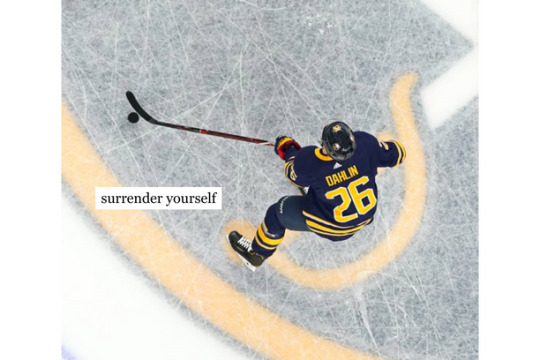




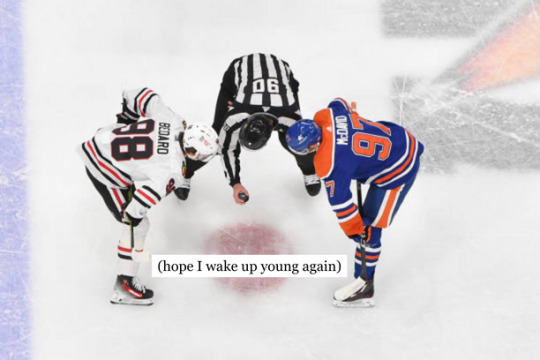
Don't let those demons in again
I fill the void up with polished doubt, fake sentiment
False Confidence - Noah Kahan
#the inherent nature of becoming a sacrificial lamb as a first overall draft pick#the cycle repeats#sidney crosby#erik johnson#taylor hall#nathan mackinnon#rasmus dahlin#connor mcdavid#auston matthews#jack hughes#connor bedard#hockey poetry#hockey poem#hockey web weaving#narratives
117 notes
·
View notes
Text
-
#talks#the juggle between wanting to play a game and drawing and relaxing and watching a video and blah blah blah#the cycle repeats#and I love and hate it
9 notes
·
View notes
Text
The Cycle Repeats: Part IV
One of the key themes of the ATLA franchise is the concept of the Avatar; master of all 4 elements, the fusion of humanity and Raava, the spirit of light and order, whose sole duty is to bring balance to the world, and be the bridge between both the physical and spiritual realms. Along with this comes the idea of reincarnation, which is the premise of the Avatar Cycle, the idea that the Avatar reincarnates in a cyclic order in any of the four nations (fire, air, water, earth). Another concept related to the Avatar Cycle (although originating from the fandom) is the idea of the Avatar fixing the mistakes of their past life, which is often indicated in differences in both habitual circumstances and personalities between both predecessor and successor, and therefore differences in morality.
But what if I were to tell you that the saying "history repeats itself" is also true among Avatar incarnations? Not exactly going the same way, but rather parallels between the lives, personalities, and accomplishments (and failures) of past lives?
In this series of metas, I will be going over parallels (or in some cases, foils) between certain pairs of Avatars that lived decades, or even centuries apart, and yet could not have ever been more similar.
An Unlikely Analogy II: Avatars Kyoshi and Korra (+ Yun)
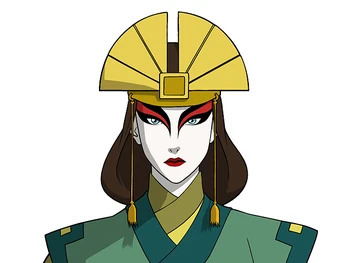
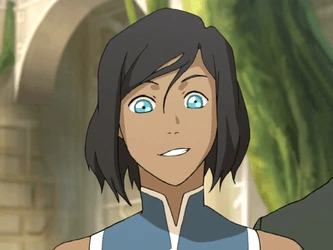
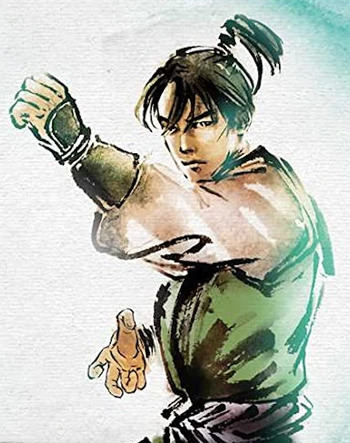
"Kyoshi was the Earth Kingdom-born Avatar immediately succeeding Avatar Kuruk of the Northern Water Tribe, and preceding Avatar Roku of the Fire Nation. She died at the age of 230, making her the oldest confirmed human, and was also an exceptionally tall woman, towering over most people. Kyoshi was born to two criminals: Jesa, a renegade Air Nomad nun, and Hark, a thief from an impoverished family of Earth Kingdom actors. She inherited her later signature outfit from her parents, adopting her mother's golden headdress and metal war fans and her father's daofei face paint."
"Korra is the current incarnation of the Avatar and immediate successor of Avatar Aang. Born and raised in the Southern Water Tribe, where she mastered waterbending, earthbending, and firebending, she later relocated to Republic City to attain a similar proficiency with airbending under the tutelage and guidance of Tenzin, as well as to help her overcome her aversion to the spiritual aspects of the bending arts. With the assistance of Aang's spirit, Korra gained the ability to energybend and, after connecting with her past lives, she gained the capacity to enter the Avatar State at will, marking her transition into a fully realized Avatar."
"Yun was the friend of Kyoshi and Rangi and the earthbending pupil of Jianzhu. Talented, charismatic, and handsome, he was misidentified as the new Earth Avatar after a long and difficult search. Following the revelation of Kyoshi's identity as the true Avatar, Yun was betrayed by Jianzhu, who felt the boy's usefulness had been exhausted and allowed Father Glowworm to carry him off in the mountains."
I once again posted the first paragraph of their respective pages, and you might be wondering why I've included Yun. The reason is that, although Yun was misidentified as the Avatar, he still has various parallels with both Korra and Kyoshi during his "journey". On the surface, you might say that they are more balanced; they have both similarities and differences between their morals and personalities. You would be right on this account, so let's dive in!
(WARNING: There will be possible spoilers for both The Rise of Kyoshi and The Shadow of Kyoshi. If you do not wish to be spoiled, I suggest not reading any further and scrolling past this post until you have finished reading both novels. You have been warned.)
First, we have to take account the parallels between Kyoshi and Korra. The problems that arose during their times were rather complex; Kyoshi's predecessor Kuruk left behind a destabilised Earth Kingdom overrun by criminals, while Aang, although he brought the world to peace, had left behind both the Equalists and the Red Lotus for Korra to deal with. In addition, according to the first chapter of both The Rise of Kyoshi and the premier of The Legend of Korra, Welcome to Republic City (Book 1: Episode 1), both Jianzhu and the White Lotus had been looking for the Avatar for years. Jianzhu and Kelsang had been trying to locate the Avatar across the Earth Kingdom, while the White Lotus had searched both the North and South Poles. This is also where Yun comes in.
Initially in Book 1, Korra had similar opinions on violence and control as Kyoshi did (only justice will bring peace), and even befriended a polar bear-dog (Naga) at the age of four. (Polar bear-dogs are considered to be dangerous animals in the Avatarverse.) However, there is a difference between how each Avatar reacted to her status. Kyoshi denied it and ran away (which I have mentioned parallels with Aang), whereas Korra was the one who discovered her status and accepted her fate as the Avatar, saying that there was nothing more she wanted to be, which is a parallel to Yun's false identity as the Avatar. Ironically, Kyoshi (like Aang) ran away from her duties when the world needed the Avatar, while Korra accepted her duties during a time when the world had long since advanced beyond the need of an Avatar.
Both Kyoshi and Korra are also of mixed ancestry; Kyoshi's father was from the Earth Kingdom, while her mother was a rogue Air Nomad. Korra's father, like Kyoshi's mother, was a rogue immigrant to another nation, being a member of the NWT royal family, while her mother was from the SWT, which gained independence from the North after the Water Tribe Civil War. Kyoshi and Korra are also the only two Avatars to master the elements in their home nation, rather than travelling abroad (Kyoshi learned earth-, fire-, and waterbending with the FOC in the Earth Kingdom and mastered air- and waterbending in the Fire Nation, while Korra mastered water-, earth, and fire-bending in the White Lotus Compound in the South Pole and learned airbending at Air Temple Island in Republic City). However, Kyoshi was constantly on the run, living on the streets as a child, whereas Korra lived in comfort, but isolation.
However, their bending affinity are opposites. Kyoshi struggled to earthbend due to her sheer power, to the point that she had trouble bending small amounts of earth, while moving chunks of the seafloor with ease (not how it typically works), and favoring its elemental opposite, air, in combat. Korra, on the other hand, preferred earth- and especially firebending in combat, while struggling to airbend due to its philosophies contradicting with her drive and hot-headedness.
Now, the parallel between Korra and Yun. Korra and Yun's respective upbringings parallel each other; both grew up isolated in compounds, and being taught by the companions of their predecessors, being told that the only thing that mattered was their status as the Avatar. As a result, this caused a serious mental stunt for both of them, especially when it was revealed that Yun wasn't the true Avatar. Korra wasn't taught how to properly handle politics, whereas Yun went all-in and hunted Kyoshi down Tai Lung-style. Ironically, this was originally supposed to be a way to protect the Avatar, issued by their predecessors, Aang and Kuruk respectively, which was apparently misinterpreted by their supposed caretakers (The White Lotus and Kuruk's companions respectively).
Finally, the parallels between Kyoshi and Yun. Both are similar in that they both grew up abandoned in the streets; Kyoshi in Yokoya, and Yun in Makapu; at least until they were moved into Jianzhu's mansion in Yokoya. Both were "cared" for by a former companion of Avatar Kuruk (Kelsang and Jianzhu respectively; note that I put quotation marks on "cared for" because Jianzhu pretty much physically and mentally abused Yun), but this is where the similarities end.
Now, there are a handful of scenes in the Kyoshi novels which particularly stood out to me. The parallels between Yun's ability to bend the tiniest speck of dust vs Kyoshi struggling with the finer movements but easily raising the entire sea floor during her fight with Tagaka. The parallels between Kyoshi almost drowning herself to connect with Kuruk for the first time while forgetting she can waterbend vs Yun returning to the physical world only to be denied access to water.
We have to remember that the element of earth plays a central role in Rise; Kyoshi is a born earthbender, the book takes place in the Earth Kingdom, earth is the only element Yun can bend, earthbending is the only advantage Jianzhu has against Kyoshi, most of the FOC (Kyoshi's daofei gang) are earthbenders,etc, while the element of water is a central theme in Shadow (which is ironic, considering the book takes place in the Fire Nation), as is Avatar Kuruk's legacy as the Water Tribe predecessor of Kyoshi. In the original series, Iroh states that water is the element of change. During the whole novel, water represents the ability to move on, the ability to change. In these two scenes, water represents both Kyoshi feeling overwhelmed by her new duties as the Avatar and Yun's desperation to prove that he is the true Avatar.
Also, during the final battle, Kyoshi kills Yun by freezing his heart and lungs. Her ability to waterbend represents her ability to move on from the past and change, whereas his lack of waterbending represents his inability to grow, to move on from the past, to change. Yun even bends the earth similar to water, but it's a mere imitation of the bending art, not the skill itself.
Generally speaking, most people can easily spot the similarities (and in some cases, differences) between Kyoshi and Korra. From bending to upbringing to the conclusions of their respective histories, one can find some details between both Avatars. What they don't see is their biggest connecting link; their similarities with Yun. The False Avatar acts as the foil to enhance both characters, their histories, and their legacy. In the next part, we'll discuss the similarities between the current Avatar Korra and the Water Tribe Avatar before her, Kuruk.
<- Prev I Next ->
#atla#past avatars#kyoshi#korra#yun#avatar yun#<- prev tag is literally MOCKING him#lok#kyoshi novels#the rise of kyoshi#the shadow of kyoshi#the cycle repeats#mone's theory#mone digs deep
32 notes
·
View notes
Text
dude I love seeing the younguns of instagram repost extremely old and shitty screenshots of MCR tumblr memes
KEEP THE CULTURE ALIVE
15 notes
·
View notes
Text
It doesn’t have to hurt.
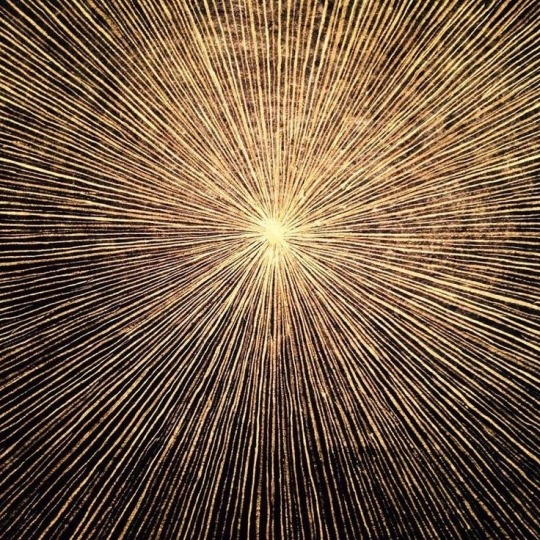

(We will be gone but not forever)
#farewell transmission#the cycle repeats#aesthetic#d.distortion#writing#songs: ohia#gloomy#music#november#spotify#end of the world#apocalypse#explosion
14 notes
·
View notes
Text
owlboy is a story about cycles and repetition and how everything can change in an instant. Owlboy is about death and life and how it affects people. the loop repeats.
I love owlboy
#Owlboy#My meds are wearing off so I’m probably not making sense but it’s about the repetition#The cycle repeats#:)
10 notes
·
View notes
Text
phars overload *explodges*
#AAAAAAAA#theyre living in my mind rent free just like brance#the cycle repeats#solarballs#mars solarballs#phaeton solarballs#if theia can so can phaeton RAHAHAJ#phars#phaeton x mars
3 notes
·
View notes
Text

The vicious cycle continues unceasingly
#The vicious cycle continues unceasingly#the cycle continues#the cycle never ends#the cycle repeats#the cycle is endless#ausgov#politas#auspol#tasgov#taspol#australia#fuck neoliberals#neoliberal capitalism#anthony albanese#albanese government#vicious cycle#eat the rich#eat the fucking rich#late stage capitalism#fuck capitalism#anti capitalism#capitalist hell#class war#antiwork#anti slavery#fuck work#anti colonialism#anticapitalista#anti cop#anti colonization
3 notes
·
View notes
Text
where's that post that's like *through gritted teeth* "it dosen't have to be perfect it just needs to be done" like 7 times bc that's my mood rn
#why do I do this to myself?#I have a hard time writing something. I slog through anyway. I take a break for a few weeks.#I forget how to write. I still have something I need to write. I slog through anyway. it feels rushed and unfinished.#but I know that if I DON'T do it I'll just get even more out of practice. I finally finish it. I decide to take a break for a few weeks#the cycle repeats#aaaaaaaaaaaaaaaaaaaaaaaaaaaaaaaaaaaaaaaaaaa
2 notes
·
View notes
Text
i love my silly little blog with my silly little hyperfixations and my silly little interactions
#i forget tumblr exists every so often#and then i remember#and i go feral for a few months#the cycle repeats#gotta love the memory issues :)
3 notes
·
View notes
Text
The Cycle Repeats: Part I
One of the key themes of the ATLA franchise is the concept of the Avatar; master of all 4 elements, the fusion of humanity and Raava, the spirit of light and order, whose sole duty is to bring balance to the world, and be the bridge between both the physical and spiritual realms. Along with this comes the idea of reincarnation, which is the premise of the Avatar Cycle, the idea that the Avatar reincarnates in a cyclic order in any of the four nations (fire, air, water, earth). Another concept related to the Avatar Cycle (although originating from the fandom) is the idea of the Avatar fixing the mistakes of their past life, which is often indicated in differences in both habitual circumstances and personalities between both predecessor and successor, and therefore differences in morality.
But what if I were to tell you that the saying "history repeats itself" is also true among Avatar incarnations? Not exactly going the same way, but rather parallels between the lives, personalities, and accomplishments (and failures) of past lives?
In this series of metas, I will be going over parallels (or in some cases, foils) between certain pairs of Avatars that lived decades, or even centuries apart, and yet could not have ever been more similar.
The Unlikely Analogy: Avatars Aang and Kuruk


"Aang was an Air Nomad born in 12 BG and the Avatar during the Hundred Year War, succeeding Avatar Roku and preceding Avatar Korra. As the Avatar of his time, he was the only person capable of using all four bending arts: airbending, waterbending, earthbending, and firebending. He was also one of a select few Avatars and one of the first in many cycles to learn the ancient art of energybending as well as the first Avatar known to have actively used the technique."
"Kuruk was the Water Tribe Avatar immediately succeeding Avatar Yangchen and preceding Avatar Kyoshi. Native to the Northern Water Tribe, he was a powerful and gifted bender who dreamed of changing the mortal world for the better by uniting the people and acting upon the foundations laid by Yangchen."
Both texts above are directly taken from the first paragraphs of their respective wiki pages; however, you would be forgiven for believing they are nothing alike, specifically due to their respective heritages. In reality, I would wager that Aang and Kuruk are actually the same person (literally and metaphorically).
(WARNING: There will be possible spoilers for both The Rise of Kyoshi and The Shadow of Kyoshi, particularly regarding Kuruk's backstory. If you do not wish to be spoiled, I suggest not reading any further and scrolling past this post until you have finished reading both novels. You have been warned.)
Kuruk's legacy plays a central role in both Kyoshi novels, especially in the Shadow of Kyoshi, where it's revealed that Kuruk hunted and killed dark spirits. This lead to both his body and spirit falling apart and him dying at just 33.
The first parallel is, ironically, their heritage. Aang is an Air Nomad, and his native element is air. Kuruk is a Water Tribesman, and his native element is water. Air and water are compatible in the sense that water can literally be described as a combination of the qualities of earth and air. Like earth, water can be strong and solid. Like air, water can be gaseous, fluid, and unpredictable. However, water also has an intermediate liquid state, with a definite volume, but always changing shape. Something about being the element of change or something. Just like the Avatar Cycle. I actually wrote a meta dedicated to this subject.
Why am I mentioning this? It's because the first element Aang learned to master (besides air, ofc) is water (which was also the element that was easiest for Aang to learn besides his own, due to air and water having similar philosophies), and he first learned to waterbend in the Northern Water Tribe, Kuruk's home (although he only learned the basics with Master Pakku; he only mastered it under the tutelage of his companion Katara of the Southern Water Tribe, who is also part-NWT). Conversely, the last element Kuruk learned to master was air, and he mastered airbending at the Southern Air Temple, Aang's home (he learned to master it under the tutelage of his companion Monk Kelsang, and it can also be assumed hat it was the element that was easiest for Kuruk to master besides water). Both Kelsang and Katara go on to become mentors to Kuruk and Aang's successors, Kyoshi and Korra respectively.
Another parallel is that both Kuruk and Aang were successors to wise and influential Avatars of their time (Avatars Yangchen and Roku respectively). As I have said in the first paragraph of the introduction, I mentioned the idea of the current Avatar fixing the mistakes of his/her predecessor. In The Shadow of Kyoshi, it is revealed that Yangchen neglected the spirit world, often siding with humans when making decisions between them. This lead to an increase of corrupted spirits ravaging the physical world during Kuruk's time by passing through rifts created by Father Glowworm, some attacking up to a dozen villages in one day. In the episode The Avatar and the Firelord (Book 3: Episode 6), it's revealed that Roku, by refusing to kill Firelord Sozin, was unable to prevent the Air Nomad Genocide and, by extension, the Hundred Year War. Both Kuruk and Aang had to face the consequences of their revered past lives.
Also, Kuruk ended up spending so much time in the spirit world that he ended up neglecting his duties in the physical world. He also started leading a lifestyle filled with alcoholism and debauchery, both as a coping mechanism and as a smokescreen to hide his duties from his Team Avatar (Jianzhu, Kelsang, and Hei-Ran). This means that both Aang and Kuruk have avoided their Avatar duties, but due to different reasons. Aang ran away because he didn't WANT to be the Avatar, while Kuruk ran away because he NEEDED to be the Avatar.
Kuruk hid his illness from his friends because he wanted to protect his predecessor, Avatar Yangchen's legacy (she often sided with humans over spirits when making decisions between them), and because he worried for his friends' safety. Both Aang and Kuruk share a common fear: being unable to save their loved ones from despair. This can be tied to the episode Nightmares and Daydreams (Book 3: Episode 9), where Aang suffered with anxiety nightmares the night before the Black Sun invasion. One series in particular consisted of his friends, Zuko, Katara, Sokka, and Toph, suffering, with Aang unable to save them, and Kuruk's refusal to confide in his friends to keep them safe (which could be a result of two of Yangchen's companions sacrificing their lives to protect her, and Kuruk not wanting to repeat it). The difference is that unlike Kuruk, Aang did confide in his friends (more accurately, you could say that his friends confided in him, as he was the only one able to defeat Firelord Ozai), and in the end, they all played a role in defeating Ozai.
This isn't even taking account the Kummi-Taang theory, which indicates more parallels between them both. To give a simple run-down, the theory states that Toph is a reincarnation of Ummi, Kuruk's wife, whose face was stolen by the spirit Koh The Face Stealer, hence why Toph was born blind, and why Aang met her in the mystical swamp in the episode of the same name (Book 2: Episode 4). I'll post another link to the actual meta dedicated to it:
On a more positive note, both Kuruk and Aang are stated to be bending prodigies, Kuruk especially. They each invented an airbending technique at the Southern Air Temple during their airbending training, demonstrating their unique creativity and adaptability (Kuruk's technique involved creating a cushion of air under a heavy object so it could be slid and moved over a floor with care, Aang's technique, the air scooter, is a spherical "ball" of air that can be ridden balancing on it like a top). Aang had already learned 35 of the 36 tiers of airbending at the time, so it would be rather ironic if Kuruk's technique was the only one Aang hadn't mastered at the time; however, I do have a theory that both techniques are connected, which I will discuss in a separate post. Aang earned his airbending mastery tattoos, and had Kuruk been an Air Nomad, he woud have gotten the same tattoos. Though, he did get a sky bison as a gift, and Aang's animal companion was a sky bison (Appa).

I noticed that the only time Kuruk actually wears his iconic polar bear headdress is when Aang summons him in the episode Sozin's Comet, Part 2: The Old Masters (Book 3: Episode 19), not counting his brief appearance in The Avatar State (Book 2: Episode 1). In The Old Masters, Aang summons the past four Avatars before him for advice on how to defeat Firelord Ozai. According to @atlaculture, Kuruk's decision to wear the headdress in front of Aang--a strict vegetarian--could be him subtly reminding Aang that killing isn't always merciless (as Kuruk was a hunter, and probably had to hunt down large animals for food or as a rite of passage), which is stated here.
I noticed the line Aang says just before he summoned Kuruk:
"I need to look deep inside myself."
Despite the existence of the webcomic Escape from the Spirit World, which takes place between Books 2 and 3 (although Yangchen did say Aang wouldn't remember his journey in the Spirit World), this lines implies that out of Aang's past four lives, Kuruk's is the one he knows least about (Roku was Aang's predecessor, Aang probably knew/learned a lot about Kyoshi during his visits to the Earth Kingdom, and Yangchen, being an Air Nomad like Aang, was revered almost as a god-like figure across the four nations). Ironically, if you dig deeper, Kuruk is also the past life who was/is most similar to Aang.
Also, Kuruk's actual advice to Aang was: "Aang, you must actively shape your own destiny and the destiny of the world." This piece of advice has multiple interpretations. What Aang interpreted was Kuruk telling him to kill Ozai (combined with the fact that Kuruk was wearing a literal animal skin in front of Aang, only reinforcing his interpretation). However, Kuruk never said anything about killing Ozai. He could have actually meant that to him, it doesn't matter how Aang defeated Ozai, or even if Aang did kill him. To Kuruk, the only thing that mattered was Aang performing the act of Showing Up, and actively finding a way to defeat Ozai himself. Therefore, Aang obtaining energybending and then taking Ozai's bending away rather than killing him doesn't mean he didn't follow any of the Avatars' advice. On the contrary, by actively finding a third option to end the war, and actively participating in the final battle, Aang actually subconcisiously followed Kuruk's advice to heart (although you could say Aang didn't follow Kuruk's advice, since Aang didn't actively seek out the lionturtle; rather he was merely kidnapped by chance).
The final parallel between Aang and Kuruk is their relatively young deaths; more specifically, their final wishes. Kuruk died at just 33, surrounded by his Team Avatar, and he made them promise to take care of his successor and make sure she succeeds as the Avatar. Around 500 years later, Aang died at a relatively young biological age of 66 (and the chronological age of 165) surrounded by his Team Avatar and the Order of the White Lotus, and he made them promise to do the exact same thing. However, both Yun and Korra ended up growing up isolated from the rest of the world, and being told that being the Avatar was the only thing that mattered, which led to a serious mental stunt, even though it wasn't Aang's fault Korra ended up being kept in the Southern Compound on the orders of Tonraq, Tenzin, and Sokka, or Kuruk's fault that Yun was being physically and mentally abused by Jianzhu and Hei-Ran. The only difference was that Korra was correctly identified as the Avatar, but Yun wasn't. Kyoshi did not grow up the same way, but she was not spared either; I'll make a meta on her too. But seriously, how in the four nations is it possible for two people who lived centuries apart die with the exact same wish given to their loved ones? Unless they were the Avatar.
In conclusion, despite the difference in Aang and Kuruk's heritage, morality, and overall results as the Avatar, one could argue that it is true that certain beats in the cycle often repeat, depending on their journeys, personalities, and abilities. In the next part, I will explore the parallels between Avatars Aang and Kyoshi, Kuruk's successor.

Next ->
#ATLA#Avatar#Aang#Avatar Aang#media analysis#Kuruk#Avatar Kuruk#The Cycle Repeats#Past Lives#Past Avatars#kyoshi novels#the rise of kyoshi#the shadow of kyoshi#On a completely unrelated note#I just realized that they both have the exact same beard too!#Even though adult!Aang's look was inspired by Mike DiMartino#Except Kuruk's beard is a bit longer#while Aang's beard is neat and trimmed.#mah rambles#mone's theory#mone digs deep
18 notes
·
View notes
Text
youtube
2 notes
·
View notes
Text
i woke up in a cold sweat remembering that someone asked me what façade was and i have to live with the knowledge that there are people who have not met my good friends grace and trip
#zack speaks a lot tag#playing façade on the family pc and knocking on yhe door#i say melon#trip kills me instantly#the cycle repeats
4 notes
·
View notes
Text
first post
i fucking Obliterated my main with w101 so VOILA. side blogge
#it is that time of year where i arise from slumber and eat sleep and breathe wizard101 for at least One Month#the cycle repeats
3 notes
·
View notes
Text
jeff buckley was so right it really is never over (five years of high school and now five years of uni just to get into another job when will it end when can I take a break)
#the cycle never ends#god I hope it ends#I don’t know where there is but I hope it’s somewhere and I hope it’s beautiful#university#never over#high school#jeff buckley#anti capitalism#the cycle repeats#John green reference#john green#life quotes
1 note
·
View note
Text
Thinking about Fall Out Boy
#star speaks#the more I delve into the history of Fall Out Boy the more obsessed I become#this started out as a casual thing why do I want to listen to all of the EPs all of the sudden#bitch I wasn’t even this obsessed with P*nic! and I was like REALLY OBSESSED WITH THEM-#oh wait this is exact what I’ve been doing with Check Please#the cycle repeats#but I’m not ready to leave check please behind PLEASE DONT LEAVE ME
0 notes